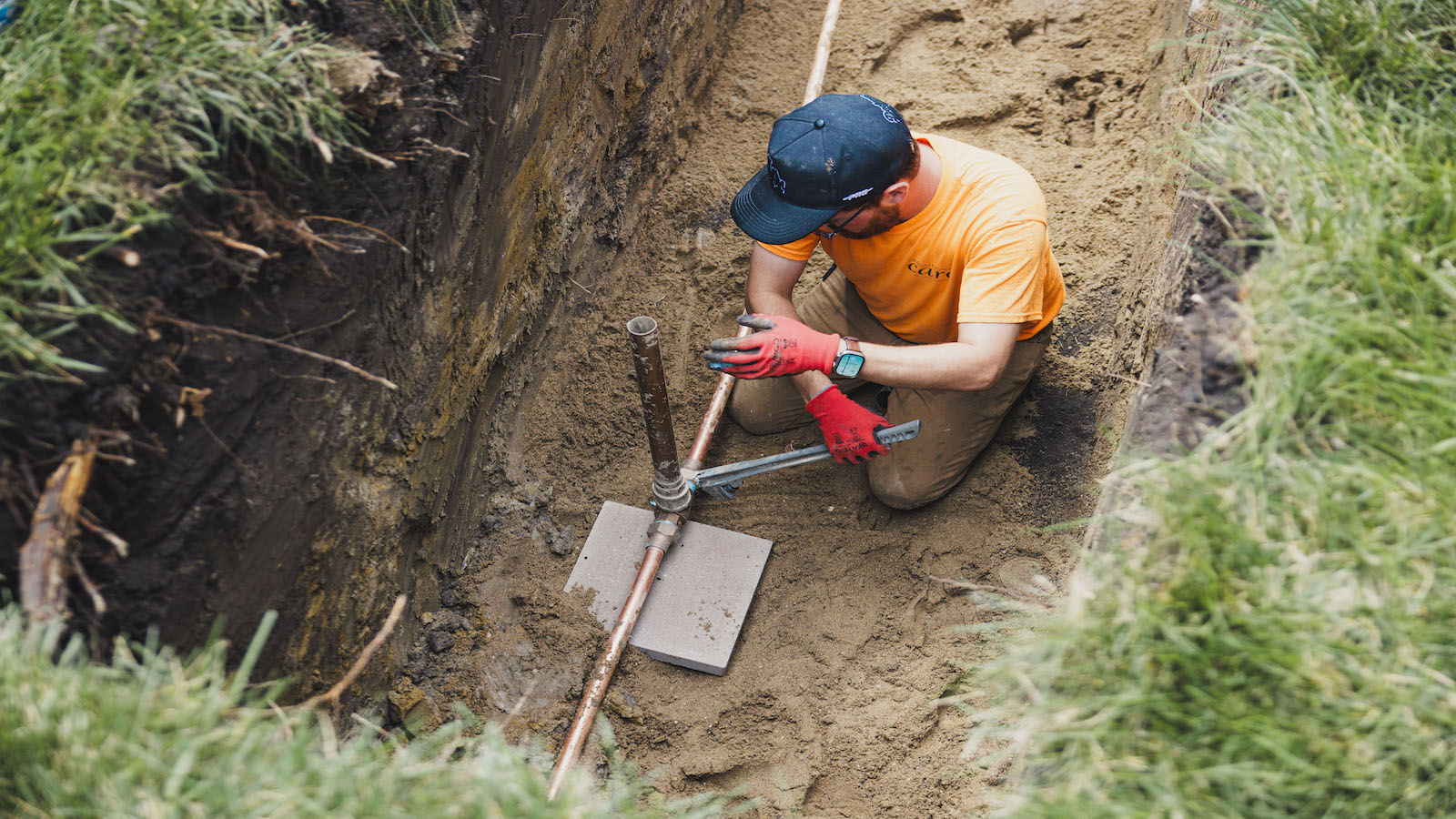Road construction impacts the environment by releasing emissions, using raw materials and harming ecosystems. Artificial intelligence (AI) and predictive maintenance offer solutions to minimize these impacts by reducing calculation errors and the need for extensive repairs. These innovations are paving the way for more sustainable practices, applicable from large-scale construction to eco-conscious homeowners seeking to minimize their environmental impact.
The Environmental Impact of Traditional Road Construction
Roads are a necessary form of transportation, thus they span a lot of space. They require time, resources, labor and equipment to complete, as well as routine maintenance to remain in good condition. Traditional construction has negative environmental impacts that must be mitigated for the planet’s health.
Greenhouse Gas Emissions
Constructing and maintaining roads accounts for up to 25% of greenhouse gas emissions from transportation, which is over a quarter of the total world energy-related emissions. Transportation pollution comes from vehicles using fossil fuels to drive on roads, as well as the production and transportation of materials for the roads themselves.
Use of Raw Materials
Most roads are paved with asphalt cement made of bitumen bound with mineral aggregate. The creation of virgin asphalt cement requires raw materials and releases carbon emissions.
However, recycling asphalt is a viable alternative. In North America, 95% of removed asphalt is recycled as base material or reused in new pavements, offering a more sustainable option with comparable moldability to virgin concrete.
Environmental Damage
Roads have significantly altered the landscape, but their construction can also cause environmental damage. They can cut through animal habitats, separating those animals from water and food sources. It then becomes dangerous for animals to cross roads — for example, Florida’s Highway 27 is regarded as one of the most dangerous roads for wildlife. Additionally, their pollutants include the chemicals used during construction and the noise and lights from traffic.
Preventive vs. Predictive Maintenance
Considering the rising costs of equipment and supplies, labor shortages and environmental concerns, proper maintenance is required to effectively meet project demands. Proactive maintenance strategies, including preventive and predictive approaches, are essential.
- Preventive maintenance: The routine inspections and maintenance meant to keep something in optimal condition
- Predictive maintenance: The use of smart technologies to monitor equipment to find where improvements should be made
How Predictive Maintenance Makes Its Impact in Road Construction’s Environmental Footprint
By detecting potential vulnerabilities in advance, engineers can use data regarding traffic and climate to implement targeted repairs, minimizing environmental disruption.
Noise
Construction work can create noise that irritates nearby residents and stresses livestock. Notifying the affected parties of the noise and construction timeline beforehand helps people to make appropriate accommodations. Road maintenance teams can adhere to daytime working hours and use modernized machinery to accomplish the work more quickly and quietly.
Dust
Excess exposure to airborne particles can lower air quality, cause eye and skin irritation, result in respiratory issues in people, and cloud waterways and other environments. Detecting road surface issues early on allows for targeted, less disruptive repairs that can potentially reduce dust generation. To minimize the impact of dust further, roadworkers should consider watering, alternative material choices or dust binders.
Vibrations
Vibrations can damage the surroundings and may be heightened on roads in poor condition and during colder weather. Using predictive analytics, construction managers can establish timelines to reduce the time spent using machinery that causes high vibrations and notify surrounding residents and business owners. Predictive monitoring can help road maintenance teams schedule repairs only when necessary, therefore minimizing vibration frequency.
Waste
Wasted materials can lead to additional hazards and costs during a construction project, so it’s beneficial to plan how to deal with and dispose of waste ahead of time. Road management workers can make precise material calculations, incorporate eco-friendly or recyclable materials, and utilize industrial by-products. These strategies can decrease the volume of waste created during road construction projects.
Age
AI-powered monitoring can combat road deterioration, such as cracks and potholes, preventing accidents and injuries. Early intervention also reduces the need for extensive repairs and replacements, decreasing resource consumption, emissions, labor time and costs.
AI Is Revolutionizing Predictive Road Maintenance
AI improves predictive maintenance by analyzing accurate information and best practice data. This allows construction workers to determine precise material requirements and identify potential issues before they occur. Digital modeling tools like computer-aided design software and BIM further help the paving industry reduce costs, improve precision and enhance workflows. AI-optimized maintenance ensures safer conditions for workers and drivers.
AI-powered predictive maintenance tools include:
- Internet of Things devices can gather live traffic and weather data.
- Bridge pressure sensors can detect structural issues.
- AI models can examine historical and current data to predict when and where repairs may be necessary.
- Digital modeling tools can help engineers design roads with precision.
- Image processing techniques can detect and classify cracks.
- Drones can efficiently collect data from large stretches of roads.
Even now, AI is being credited for helping develop a new type of asphalt, which utilizes biomass waste to essentially “heal itself”, thus reducing the need for routine maintenance and emergency repairs.
While new methods involve initial costs and a learning curve, the benefits for efficiency and sustainability are significant. Widespread adoption of these techniques supports a circular economy, maximizing resource lifecycles. By 2026, the industry is estimated to spend $4 billion on AI, transforming project planning, on-site safety and waste reduction.
Predictive Maintenance in the Home
Proactive maintenance, including predictive strategies, extends beyond roadwork, offering environmental and financial benefits to homeowners.
Smart home upgrades can be affordable and sustainable, saving money long-term. Start small with user-friendly smart technologies:
- Prevent water waste: Use water-efficient fixtures to save about 700 gallons annually, and install fast-acting sensors to detect leaks in your plumbing system.
- Monitor energy use and utilities: Install energy monitoring plugs for appliances to track their performance, allowing you to identify inefficiencies.
- Optimize HVAC performance: Schedule regular HVAC filter checks to provide optimal temperatures and ventilation. Spotting and sealing leaks in your air ducts can make your system 20% more effective and less prone to long-term damage.
- Maintain exterior health: A house’s exterior protects it from the elements. Monitor roof and gutter health with camera technology to keep them in good condition.
- Manage utilities proactively: Set up automated alerts for unusual utility use, which can occur due to faulty appliances or lifestyle changes in the home.
AI supports sustainable living through smart home technology, preventing waste and reducing utility costs. Options include smart thermostats and smart plugs. You can weigh what is the most important savings opportunity for you and find the right solution for your home.
AI Paving the Way to Productivity and Sustainability
Road management professionals should use new technology to predict problems on jobsites and combat the negative environmental effects of construction. From industrial road construction to energy savings at home, predictive maintenance and sustainable practices are crucial. Small steps can lead to big changes.
Source link
Rose Morrison biofriendlyplanet.com



